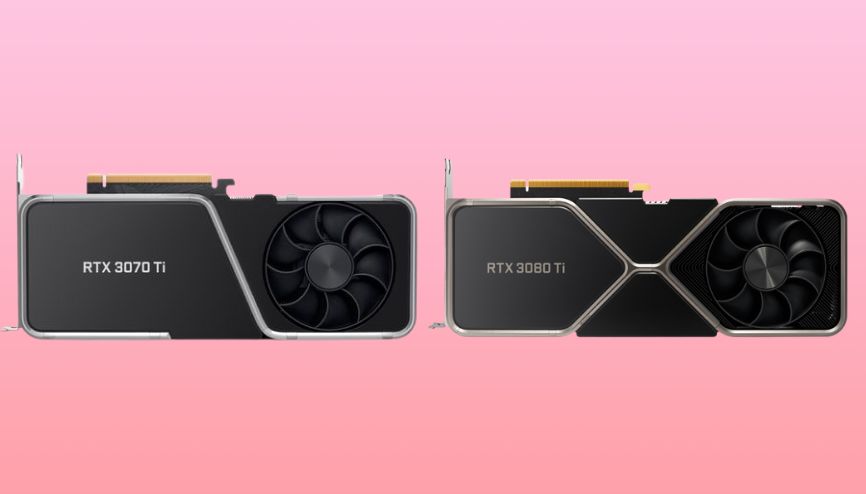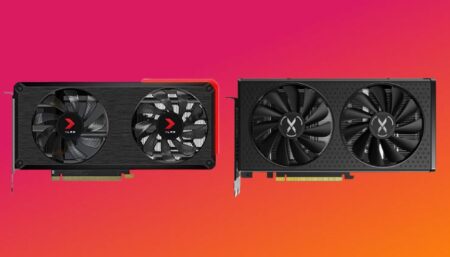
A graphics card is essential for everyone because everyone needs them for gaming or to make videos for you to watch. The shortage of GPUs has made buying the best graphics cards next to impossible, and when you are going to find one, it’s usually in an expensive range. In those days, during 2021 and 2022, cryptocurrencies like Bitcoin and Ethereum were facing absolutely catastrophic booms. This is why GPU miners worry about finding what graphics cards they must find to mine crypto coins.
So to resolve this problem and help tackle the dire GPU availability situation faced by gamers, NVIDIA introduced a new LHD version of its already existing RTX 3000 graphics cards. As the name implies, LHR cards have a lower hash rate than their full hash rate (FHR) or non-LHR counterparts. It raised many questions. What is meant by LHR and non-LHR GPU? What is the difference between LHR and non-LHR GPUs? In this article, we will give you the answers to all your questions.
Key Takeaways
- LHR stands for Lite Hash Rate, which is a feature that limits the mining performance of some GPUs to discourage cryptocurrency miners from buying them.
- Non-LHR GPUs are the ones that do not have this feature and can mine at full speed, making them more desirable and expensive for miners.
- LHR GPUs are mainly targeted at gamers who want to buy a high-end GPU without paying a premium price or competing with miners for supply.
- LHR GPUs have no impact on gaming performance, as they only affect the hash rate of certain mining algorithms, such as Ethereum’s Ethash.
- LHR GPUs can be identified by their model number, which usually ends with LHR, or by their product description, which may mention reduced mining performance.
What is LHR GPUs?
The LHR GPUs launched by Nvidia stands for “Little Hash Rate.” The reason for introducing this version is to ensure crypto miners don’t profit from the powerful video cards as much. Nvidia launched the RTX 3000 series in September 2020 for gamers, but Ethereum miners also really liked it, resulting in empty hands for gamers. To focus on this update, NVIDIA makes it harder for crypto miners and gives gamers a better chance of getting a powerful video card.
The high hash rate is one thing that makes the NVIDIA RTX 3000 series attractive to crypto miners. Crypto miners use video cards in a mining rack to bring in cryptocurrencies. The graphics card’s high hash rate and power allow miners to make a lot of profit. This is the reason for the empty hand of gamers with the RTX 3000 series. Therefore, Nvidia launches low-power version GPUs that only end up in the hands of gamers.
In the new LHR version, GPUS have a low hash rate; therefore, they are not as appealing to miners as before. Additionally, GPUs will consume approximately the same amount of electricity, making them less appealing to miners. The RTX 3060 Ti had a hash rate of approximately 60 MH/s, but the new LHR version has now been fixed at 30 MH/s. This is designed to make it difficult for cryptocurrency miners without reducing gaming performance.
but the first attempt at introducing the Lite Hash Rate limiter in the GeForce RTX 3060 didn’t go as planned. because the beta drive was accidentally unlocked, and the GPUs gave full mining performance the same week they launched. Therefore, Nvidia is back with a second attempt at LHR technology across most of its lineup two months later. With much tighter integration between firmware and software, Nvidia launched the new LHR version of GPUs, such as the RTX 3080 Ti.
Differences between LHR and non-LHR GPU?
This is important to note because your old GPU series will be available in both LHR and non-LHR configurations, such as the RTX 3070 or RTX 3080. But if you are going to find a new graphics card series, these are only available with LHR series such as the RTX 3070 Ti, RTX 3050, or the RTX 3080 Ti. In other words, some GPUs are available in the LHR version.
At the time, the following mentioned GPUs series came with an Ethereum mining limiter:
- RTX 3050
- RTX 3050 Ti
- RTX 3060
- RTX 3060 Ti
- RTX 3070
- RTX 3070 Ti
- RTX 3080 10GB
- RTX 3080 12GB
- RTX 3080 Ti
- RTX 3090 Ti
Performance:
The difference between both LHR and non-LHR is that there’s only one difference: decreased Eth hash rate. Without this difference, LHR cards do not have any other differences when compared to non-LHR graphics cards. when it comes to performance. The LHR is specially designed to limit hash rates and thus has no impact on gaming speed or performance. If you are a gamer, both the LHR and non-LHR GPUs give you a better gaming experience because there is no difference performance-wise between them.
but if you are a crypto miner, the LHR is designed to be far more likely to limit mining speeds and performance as intended. Therefore, the LHR series of GPUs are not the best for crypto mining. There is a guesstimate that miners may be able to bypass the restrictions, but currently, the LHR versions are not better for mining.
Price:
Let’s talk about the price difference. NVIDIA released the LHR series of graphics cards to make them more accessible and affordable for gamers while reducing their appeal to crypto miners. Nvidia introduced CMP HX, a dedicated crypto mining GPU for crypto miners. The purpose of introducing the LHR GPU is to prevent crypto miners from inflating prices by making it unusable for them. In this case, the price of LHR GPUs will be reasonable for the gamer.
Conclusion:
We summarize the whole topic: A graphics card is essential for everyone because everyone needs them for gaming or to make videos for you to watch. The crypto miners make the GPUs much more expensive, and the shortage of GPUs has made buying the best graphics cards next to impossible, and when you are going to find one, it’s usually in an expensive range. So to resolve this problem and help tackle the dire GPU availability situation faced by gamers, NVIDIA introduced a new LHR version of its already existing graphics cards.
The LHR is specially designed to limit hash rates and thus has no impact on gaming speed or performance. There is not much difference between LHR and non-LHR GPUs; the only difference is that the LHR GPUs have a decreased Eth hash rate; therefore, they are not as appealing to miners as before. This launch by NVIDIA makes it harder for crypto miners and gives gamers a better chance of getting a powerful video card at a reasonable price. We believe that this article helped you learn much more about graphics card technology.




![How to Fix GPU Sag? [2024]](https://www.ingameloop.com/wp-content/uploads/How-to-Fix-GPU-Sag-450x257.jpg)

![How to update GPU Drivers Windows 11? [Auto & Manual]](https://www.ingameloop.com/wp-content/uploads/How-to-Update-GPU-Drivers-Windows-11-450x257.jpg)
![Does GPU Affect FPS? [2024]](https://www.ingameloop.com/wp-content/uploads/Does-GPU-affect-FPS-450x257.jpg)